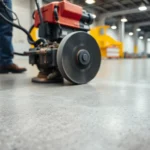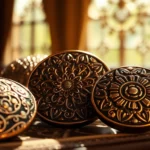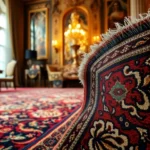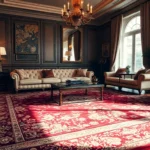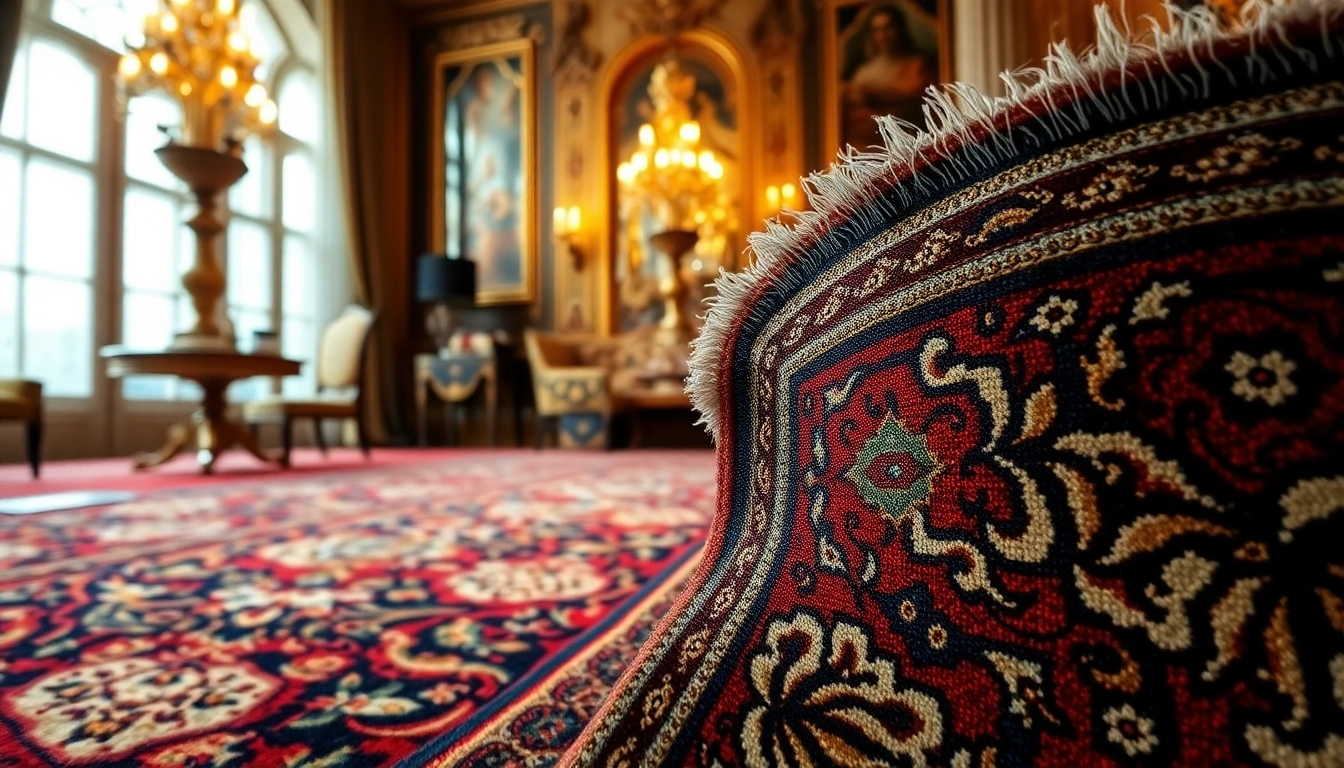Understanding the Essence of Tappeto persiano Milano
In the vibrant city of Milan, where design and tradition seamlessly blend, acquiring a Tappeto persiano Milano has become an epitome of elegance and cultural heritage. These exquisite handwoven rugs are not merely decorative pieces; they embody centuries of craftsmanship, history, and artistry originating from Iran and the Persian cultural sphere. Their allure lies in the rich symbolism, intricate patterns, and high-quality materials that distinguish authentic pieces from imitations. For discerning homeowners and interior designers alike, understanding the cultural significance and quality factors of Persian rugs is crucial in making an informed investment that enhances both aesthetic appeal and value.
To explore this finely curated world deeply, one can visit trusted showrooms and specialists in Milan who excel in sourcing authentic Tappeto persiano Milano. Such establishments ensure that every rug bears the true craftsmanship that has been preserved through generations, offering clients peace of mind regarding provenance and quality. Whether you are a collector, looking for a centerpiece for your living room, or a business aiming to add an opulent touch to an executive office, investing in a genuine Persian rug can transform your space into a symbol of sophistication.
History and Cultural Significance of Persian Rugs in Milan
The history of Persian rugs dates back to ancient Persia, over 2,500 years ago, where weaving was not only a necessity but a form of artistic expression. As trade routes opened and cultural exchanges flourished, these rugs became cherished symbols of Persian identity, embodying stories, myths, and local traditions woven into every knot. Milan, renowned as a fashion and design capital, naturally embraced this cultural richness, integrating authentic Persian rugs into its sophisticated interior decor. Importers and collectors in Milan have long appreciated the durability, artistry, and symbolic motifs that these rugs encapsulate.
Today, these rugs serve as cultural ambassadors, representing a blend of ancient Persian artistry and contemporary design sensibilities. Ensuring that each piece is authentic involves verifying its origin—knots per square inch, signature motifs, and provenance documentation—all of which heighten their cultural value and serve as a testament to their craftsmanship. Iconic motifs, such as medallions, floral patterns, and geometric designs, reflect regional influences from Tabriz, Kashan, Qum, and Isfahan, each with its unique style and symbolism.
Quality Factors That Define Genuine Tappeti Persiani
Authentic Persian rugs are distinguished by several key quality factors, including material, craftsmanship, craftsmanship, and authenticity markers. The choice of materials significantly influences the rug’s durability and appearance:
- Wool: High-quality Persian rugs frequently use fine wool from Persian sheep, which offers resilience and a soft texture, complemented by vibrant dyes.
- Silk: Luxury rugs often incorporate silk threads, either entirely or in highlights, providing a luminous sheen and intricate detailing.
- Materials Blends: Some rugs combine wool and silk for durability and aesthetic finesse, catering to specific budget and design preferences.
Craftsmanship is equally crucial. Genuine rugs are hand-knotted with a density of knots per square inch that influences their intricacy and value. The best pieces exhibit meticulous knotting, symmetrical patterns, and high precision, reflecting the artisan’s skill. Authentic Tappeti persiano also display certain identifiers such as signature knotting styles unique to regional traditions, traditional dyes derived from natural sources, and age markers.
To verify authenticity, consider provenance certificates, seller reputation, and detailed examinations of the rug’s back for knot uniformity and color consistency. Selecting a trustworthy supplier in Milan, known for sourcing genuine pieces—such as specialized galleries and certified restoration houses—is essential to making a secure investment.
Benefits of Choosing Authentic Persian Rugs for Your Home or Office
The decision to incorporate an authentic Persian rug within your space offers numerous advantages beyond mere aesthetics. These benefits include:
- Timeless Elegance: Persian rugs add a sense of luxurious tradition, elevating any interior decor, whether classic or contemporary.
- Investment Value: Handcrafted, high-quality rugs tend to appreciate over time, especially those with provenance and age factors.
- Durability and Longevity: When properly selected and maintained, original Persian rugs can last for generations, maintaining their beauty and function.
- Acoustic and Thermal Benefits: Thicker, dense knots provide excellent sound absorption and insulation, ideal for creating cozy, quiet environments.
- Art and Cultural Heritage: Decorating with authentic Persian rugs connects your space to a rich cultural history, adding depth and storytelling to your environment.
Incorporating a genuine Tappeto persiano Milano into your interior thus transcends aesthetic appeal—transforming your space into a showcase of artistry, history, and lasting value.
How to Choose the Perfect Tappeto persiano Milano
Design Styles: From Traditional to Modern Interpretations
Persian rug designs span a broad aesthetic spectrum. Traditional patterns remain rooted in centuries-old motifs—medallions, floral arabesques, and intricate borders—each conveying cultural symbolism. On the other hand, modern reinterpretations adapt these motifs with cleaner lines, minimalistic aesthetics, and contemporary color palettes, making them versatile for modern spaces. Milanian interior designers often blend tradition with innovation, selecting rugs that serve as statement pieces or subtle accents, depending on design goals.
Material Qualities: Wool, Silk, and Blends Explained
As previously highlighted, material selection affects both appearance and longevity. Wool remains the most common, appreciated for its resilience and warmth, whereas silk introduces a sheen and delicate finesse, ideal for high-end, decorative pieces. Blended materials balance durability and visual elegance, suitable for high-traffic areas. When selecting, consider the functional environment—high-traffic areas may benefit from dense wool, while a formal lounge might favor silk or silk-blend rugs.
Size, Shape, and Color Considerations for Optimal Fit and Aesthetic
Proper sizing is crucial for enhancing interior harmony. Larger rugs anchor expansive spaces like living rooms, while smaller pieces complement entryways or seating areas. Shapes vary beyond the traditional rectangle—round or oval rugs can soften room proportions. Color choices should align with existing decor; muted tones provide understated elegance, while bold reds, blues, or intricate color combinations can energize the space. Balance the rug’s scale with furniture arrangements to maximize visual coherence.
Buying Tips for Authentic Persian Tappeti in Milan
Trusted Retailers and Artisans in Milan Specializing in Persian Rugs
The Milanese market hosts several reputable sources for authentic Persian rugs, including specialized galleries like Tappeto persiano Milano. These vendors often offer provenance documentation, restoration services, and expert guidance. Noteworthy establishments include the historic stores and certified outlets that curate their collections carefully, ensuring authenticity and quality.
Price Range and Budget Planning for Quality Tappeto persiano Milano
Genuine Persian rugs vary widely in price, typically ranging from €200 for smaller, less intricate pieces to over €5,000 for large, highly detailed antique or silk-laden rugs. Mid-range options, around €800-€2,500, often provide excellent craftsmanship and durability. When planning your budget, consider the rug’s age, size, materials, knot density, and provenance—these factors influence overall value. Investing in a quality piece ensures long-term satisfaction and potential appreciation.
Restoration, Maintenance, and Care Tips to Preserve Value
Regular care ensures your Persian rug maintains its beauty and value. Professional cleaning, ideally every few years, removes dust and pollutants that can degrade fibers. Avoid direct sunlight which can fade colors; instead, position rugs in shaded areas or rotate periodically. For repairs and restoration, rely on certified specialists in Milan who understand traditional techniques. Proper padding underlay also extends rug lifespan, preventing wear and slippage.
Investing in a Tappeto persiano Milano: Value and Longevity
Understanding Pricing Factors and Value Appreciation
The investment value of a Persian rug hinges on factors such as age, rarity, craftsmanship, and provenance. Antique pieces can appreciate over time, especially if originating from renowned regions like Tabriz or Kashan, with documented histories. Limited editions and designs unique to specific artisans further elevate desirability. A well-maintained, authenticated rug often increases in worth, making it both a decorative and financial asset.
Authenticity Certifications and Provenance Verification
Essential for safeguarding your investment, authenticity certifications confirm the rug’s origin, age, and materials. Provenance documentation traces ownership history, increasing buyer confidence. Reputable vendors in Milan provide detailed certification and expert appraisals—integral components for collectors or investors seeking long-term value.
Long-term Benefits of High-Quality, Handmade Persian Rugs in Interior Design
Beyond their immediate aesthetic impact, high-quality Persian rugs serve as heirlooms and conversation starters, blending artistry with cultural storytelling. Their durability ensures they can be passed down through generations, often appreciating in value. They also adapt to various interior styles, offering versatility that enhances the timeless appeal of any space.
The Latest Trends and Styles in Persian Rugs in Milan
Current Popular Patterns and Motifs
Presently, Milanese interior trends favor rugs featuring bold medallions, floral motifs, and geometric patterns rooted in classic Persian traditions. Modern interpretations involve simplified motifs with minimal lines, muted color schemes, and abstract designs suitable for contemporary environments. The fusion of traditional craftsmanship with modern aesthetics makes Persian rugs accessible and appealing to a diverse clientele.
Integration with Contemporary and Classic Decor
Persian rugs are remarkably adaptable. In classic interiors, they serve as focal points, anchoring furniture arrangements. In modern spaces, they act as statement pieces, introducing texture and pattern. Layering rugs or combining different sizes can also create bespoke, eclectic looks. Milan’s design scene increasingly seeks to harmonize old-world craftsmanship with cutting-edge interior concepts.
Emerging Color Palettes and Innovative Designs in the Market
New collections emphasize sophisticated palettes—dusky blues, earthy reds, and subtle neutrals—mirroring current design trends. Innovations include lighter dyes, eco-friendly natural materials, and subtle disruptions of traditional motifs to appeal to a global clientele seeking both heritage and innovation.
